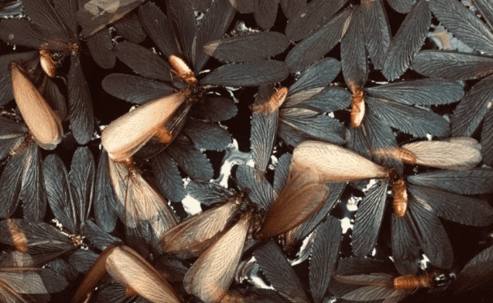If you haven’t seen a single insect or creature around your San Diego County home or business in a while, that’s a positive thing. However, it’s not a promise that your property is completely unaffected by pests. Many species can penetrate a building without being caught for some time. You won’t realize they’ve infiltrated until there is significant harm to your place, belongings, or health. When termites are involved, this is very likely.
Termites are extremely small insects that eat wood. People don’t usually notice them because they sit in the soil and hide behind walls while they wreak havoc. Americans have to pay out a collective $5 billion to deter and/or recover from the bugs. Insurance companies typically don’t provide a reprieve. Termite swarmers are a critical first signal that something is wrong. Learn more about this and how you can protect yourself with HomeShield Pest Control.
What Are The Risks of Termites?
This may be startling to read, but it’s always termite season. For every subspecies, there’s a different period of peak activity. Several of those that plague this county are active in the spring. Swarmers are tasked with creating fresh nests and procreating, so they are pivotal to a colony. Their black, yellow, or brown bodies are ½ of an inch long.
Using their wings, they’ll leave packed cocoons and surround windows and lamps. They are rather attracted to light. Workers that are often white or grayish-white and 0.12 of an inch long and are the ones that reside in structures and the ground soil. Soldiers with rectangular heads and big mandibles accompany and guard them. Swarmers make themselves known, which is why they’re a blaring sign of infestation. Further hints are:
Discovering the scaly and translucent wings of swarmers
Seeing heaps of fecal frass along with the maze patterns, mud tubes, and holes of termites
Having hollow-sounding foundations
Hearing clicking and rustling from inside walls
Noticing that paint is chipping and bloating
Observing that drywall is discolored and dipping
Tiles becoming loose
Floorboards yielding
Rigid doors and window frames
The one useful thing that termites do is keep the ecosystem balanced and healthy. When they slice putrid wood, it releases much-needed nutrients into the soil. A benefit is that plants and trees can develop normally. That’s a major plus, but it comes at a great expense for home and business owners. It’s likely that these individuals will be displaced and have to relocate. Financial losses and even medical concerns might be ahead as well. As a result of walls and bases being compromised, injuries could happen. Moreover, termites have been linked to allergic reactions. The bugs aren’t associated with disease, thankfully.
What Can You Do To Prevent Termites?
Take these steps to reduce the chances of a termite disaster:
Repair or replace decayed or damaged wood.
Have leaks and moisture problems fixed right away; particularly those dampening wood.
Close openings around caulk, utility lines, and foundations.
Put screens on all vents that face the outside.
Wash gutters and vents frequently.
Don’t allow loose wood, like lumber panels, to have contact with soil.
Place plants and wood at least two feet from the property.
Cut the grass and trim greenery regularly.
How Will HomeShield Pest Control Handle Termites?
By and large, “do-it-yourself” remedies and commercial products for termites are ineffective with infestations. Their reach is only surface deep. Also, they can be costly and hazardous to employ. You’ll need professional interventions. We at HomeShield Pest Control have industrial-grade termite control treatments that are safe and environmentally friendly. Our technicians are experienced and skilled. We also offer home pest control and commercial pest management services. Call us today to take advantage of our affordable plans!

